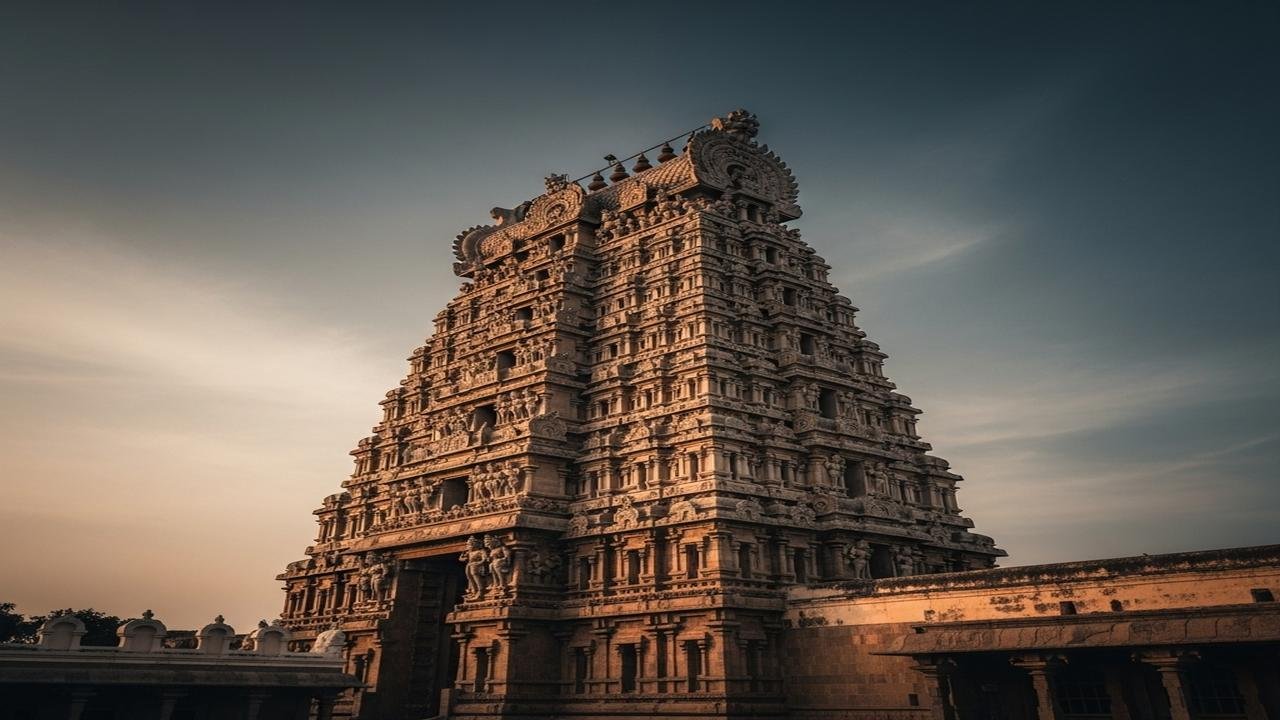The Hidden Power Behind Towering Gopurams

Why Do Temples Have Towering Gopurams?
I still remember the first time I walked under a gopuram. The air felt different — cooler, full of incense and soft chants. Ahead, a colorful tower rose like a storybook come to life, crowded with carved gods, animals, and scenes from old tales. For a moment I felt small and gently welcomed. That feeling explains why gopurams are more than stone and paint; they are the heartbeats of a temple.
Gopurams are the tall gateway towers that mark the entrance to many South Indian temples. From a distance they announce a sacred place. In old towns, seeing a gopuram meant you had arrived home — a place to pray, celebrate, or simply breathe. They guide pilgrims and villagers, pointing the way to spiritual refuge.
History and craft
Gopurams grew larger over centuries. Early temples had modest towers, but as communities became richer and more devoted, patrons built taller and more ornate gopurams. Craftsmen—stone workers, painters, and bronze makers—poured devotion into every detail. Each level of the tower tells a story: gods and goddesses, festival scenes, and lessons from epics. The art is not just decoration; it is teaching in stone, passing wisdom from one generation to the next.
Symbolism and spiritual meaning
At a simple level, a gopuram is a doorway. But it also speaks of a deeper journey. Climbing the eye from base to peak symbolizes rising from the ordinary world to the sacred. The many figures carved on the tower remind us that life is full of stories, and the temple holds them all. The towering height represents aspiration — the human longing to reach higher, to connect with the divine.
- Beacon of guidance: Gopurams help devotees find the temple, like a lighthouse for the soul.
- Cultural canvas: They preserve local myths, customs, and art styles for future generations.
- Spiritual ladder: The upward design inspires inner upliftment and reflection.
Rituals and tradition
Gopurams are not only seen; they are celebrated. Festivals begin at the gopuram with flag-hoisting, processions, and music. When the temple god is taken out, the gopuram becomes a stage where life and devotion meet. Evening lamps are lit, and the tower glows, calling people to gather. In many homes, elders teach children to respect the gopuram as a symbol of community and faith.
Modern significance
Today, gopurams still stand proudly in towns and cities. They remind us of continuity — that old values can live in new times. Architects and conservationists work to preserve these towers, using both traditional methods and modern science. For many, a gopuram is also a source of local pride and tourism, bringing people together to learn and to celebrate shared heritage.
Visiting a temple with a towering gopuram can be a quiet lesson. You may notice a child gazing at a carved elephant, a couple walking hand in hand, or an old man telling stories of past festivals. Each of these moments shows how gopurams connect people — across ages, castes, and walks of life.
Conclusion
Gopurams stand tall not to show power, but to invite. They remind us that the spiritual path is open to everyone. Next time you pass beneath one, pause. Let the carvings speak, feel the shared breath of faith, and remember that every towering stone carries a simple message: come, enter, and rise a little higher.
